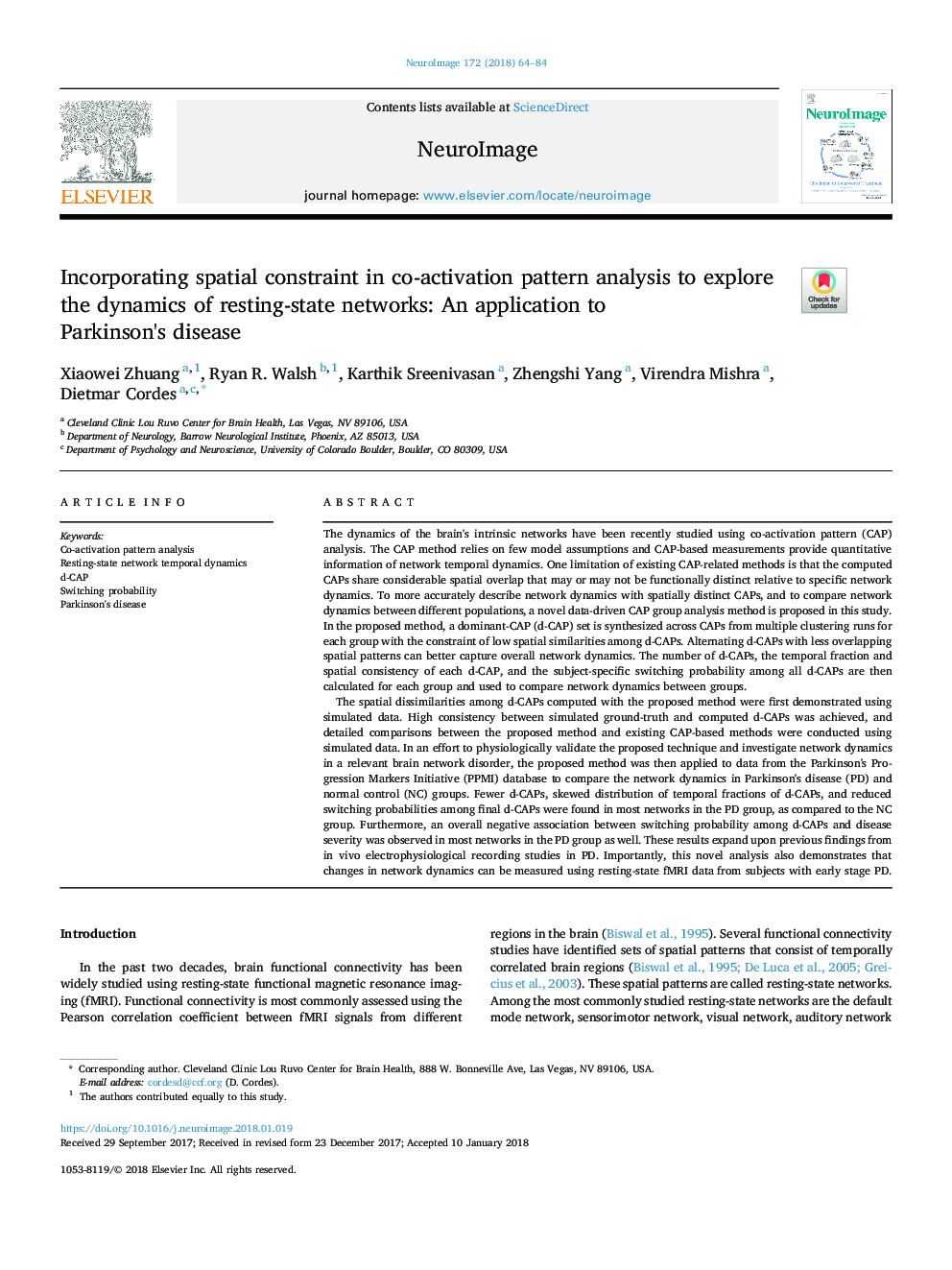| Article ID | Journal | Published Year | Pages | File Type |
|---|---|---|---|---|
| 8687008 | NeuroImage | 2018 | 21 Pages |
Abstract
The spatial dissimilarities among d-CAPs computed with the proposed method were first demonstrated using simulated data. High consistency between simulated ground-truth and computed d-CAPs was achieved, and detailed comparisons between the proposed method and existing CAP-based methods were conducted using simulated data. In an effort to physiologically validate the proposed technique and investigate network dynamics in a relevant brain network disorder, the proposed method was then applied to data from the Parkinson's Progression Markers Initiative (PPMI) database to compare the network dynamics in Parkinson's disease (PD) and normal control (NC) groups. Fewer d-CAPs, skewed distribution of temporal fractions of d-CAPs, and reduced switching probabilities among final d-CAPs were found in most networks in the PD group, as compared to the NC group. Furthermore, an overall negative association between switching probability among d-CAPs and disease severity was observed in most networks in the PD group as well. These results expand upon previous findings from in vivo electrophysiological recording studies in PD. Importantly, this novel analysis also demonstrates that changes in network dynamics can be measured using resting-state fMRI data from subjects with early stage PD.
Related Topics
Life Sciences
Neuroscience
Cognitive Neuroscience
Authors
Xiaowei Zhuang, Ryan R. Walsh, Karthik Sreenivasan, Zhengshi Yang, Virendra Mishra, Dietmar Cordes,
